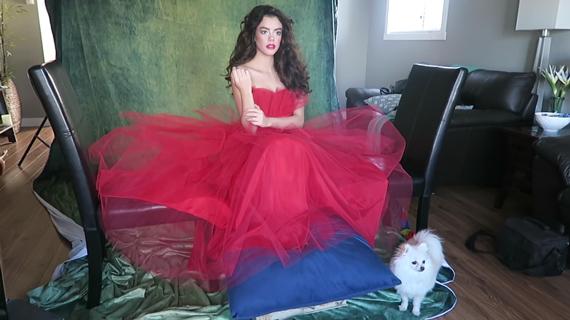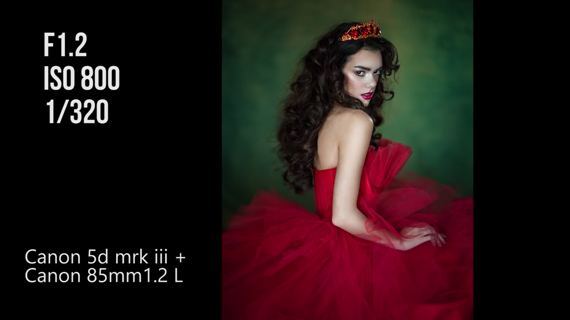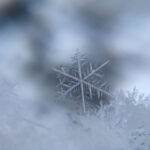When we think of portrait photography, most of us think of a fancy studio session with the model surrounded by high end studio lights. But we can achieve amazing results just by utilizing the naturally available light, too. Photographer Irene Rudnyk, who loves to take portraits with natural light, shows us how she achieves glamorous photos in her small home studio just by using light coming through the window:
Rudnyk has some neat tips and tricks up her sleeve that make a simple arrangements look high end:
- To make the dress look more puffy, she asks the model to raise her knees resting her feet on a box and a pillow. She then uses chairs on the sides and covers them with the dress to raise it and spread it out.
- Focal length of the lens is quite important when shooting portraits. Rudnyk uses and recommends a Canon 85 f/1.2L lens for portraits.
- By using a step ladder, she is able to get some flattering angles.
- Shoot as close to the window as possible to utilize as much light as possible. Also, consider your focal length and composition while positioning the model.
- Be sure not to cast your shadow on the model by standing directly in front of the window. Rudnyk shoots from an angle to avoid blocking any light.
Camera Settings for Indoor Natural Light Portrait Photography
While there are no ideal settings, and everything depends on the lighting situation, Rudnyk suggests the following camera settings to start off. If these don’t work out for you, build on them and try to make it work for you.
- Aperture. Shoot at the widest aperture that your lens will allow. With her Canon 85 f/1.2L lens, she likes to shoot at f/1.2 to blur the background and allow maximum light in.
- Shutter speed. Use a relatively fast shutter speed to avoid camera shake. When taking a photo at maximum aperture, there are high chances of missing out on focus, which can be eliminated by using a faster shutter speed. Rudnyk likes to shoot at around 1/250 to 1/320 second, but, again, this may change for you depending on the conditions at your end.
- ISO. Depending on your lighting conditions, try to keep the ISO as low as possible for a noise free and much cleaner image. Keep in mind that full frame cameras like the Canon 5D Mark III that Rudnyk uses have much better performance compared to APSC cameras at higher ISOs. Also, if you shoot RAW (which you should), don’t be afraid to bump the ISO a bit, as you can reduce it in post.
Now that you have witnessed how you can get great results indoors just by utilizing naturally available light, we hope you don’t use your lack of lighting equipment as an excuse. Keep on practicing until you master light and are able to get great portraits!
Like This Article?
Don't Miss The Next One!
Join over 100,000 photographers of all experience levels who receive our free photography tips and articles to stay current:








Leave a Reply